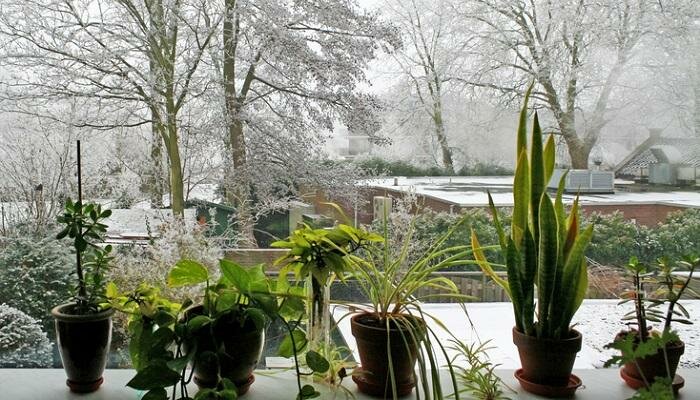
Winter is when houseplants rest for the next year, and preparing houseplants for winter entails a few basic but significant modifications in their care. Plants must be protected from extremes in temperature, dry indoor air, and low light levels as they are being prepared. Continue reading to learn how to winterize indoor plants.
Tips on Houseplant Winter Care
- Reduce the quantity of water and watering frequency to help indoor plants prepare for their dormant phase. Use room temperature water to water only when the top one to two inches (2.5-5 cm) of soil feels dry to the touch. During the winter, growth is sluggish, and too much water might cause root rot. During the winter, certain plants require very little water, while cactus and other succulents may require no water at all until spring.
- During the winter, indoor air is particularly dry, and leaves may curl, become yellow, or brown if humidity levels are too low. Growing houseplants in the winter requires the use of a room humidifier, but if you don’t have one, you may place them in a bathroom or kitchen where humidity levels are greater. Humidity trays, which are just shallow trays with a layer of moist gravel or pebbles, can also be used to place pots. The humidity around the plants rises as the water evaporates.
- Plants may need to be moved to a brighter location in the winter, such as a different room or a window facing west or south. Rotate the plant on a regular basis to ensure that all sides receive equal amounts of sunshine. If you don’t have access to a sunny window, a grow lamp or a fixture with one warm and one cold white tube may be required to supplement available light. Make sure plants aren’t exposed to drafty windows, doors, heat vents, or fireplaces.
- Wash your windows in the fall to ensure that as much light as possible gets in during the winter. During daylight hours, leave the drapes or blinds open. Wipe plant leaves with a gentle, wet cloth to allow them to absorb more light.
- Because you don’t want to stimulate new growth while the plant is approaching its dormant period, you must change the manner you feed it over the winter. Feeding should be reduced in the fall, and fertilizer should be avoided completely throughout the winter. When you notice fresh growth in the spring, you may resume regular feeding.
- Repotting should be avoided when the plant is actively developing. Disturbing the roots in the fall and winter is not a smart idea.
- On winter-growing houseplants, trim the plant and remove any dead or yellowing growth. Pruning healthy green growth will result in new growth, forcing the plant to work while it is attempting to relax.

